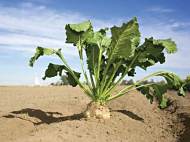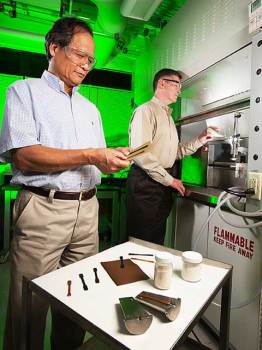Sugar beet pulp could be used for biodegradable food packaging
 While some researchers suggest that sugar beet pulp should be used as biofuel and others use it in animal feed, researchers from the United States Department of Agriculture’s Agricultural Research Service (ARS) and their associates found a way to transform this leftover residue from sugar extraction into a material that could be used for biodegradable thermoplastic – a plastic that becomes soft when heated.
While some researchers suggest that sugar beet pulp should be used as biofuel and others use it in animal feed, researchers from the United States Department of Agriculture’s Agricultural Research Service (ARS) and their associates found a way to transform this leftover residue from sugar extraction into a material that could be used for biodegradable thermoplastic – a plastic that becomes soft when heated.
Sugar beet pulp is insoluble in water and mainly composed of cellulose, hemicellulose, lignin, and pectin, and it makes around 5% of the dry matter extracted from the sugar beet. More than 1 million tons of sugar beet pulp is generated annually by U.S. beet sugar industries alone.
Chemist LinShu Liu and plant physiologist Arland Hotchkiss, both with the Dairy and Functional Foods Unit at ARS’s Eastern Regional Research Center in Wyndmoor, Pennsylvania, collaborated with professor Jinwen Zhang of Washington State University (WSU) in Pullman, in order to develop the biodegradable thermoplastic.
They used a twin screw extruder to produce the bioplastic from both sugar beet pulp and a biodegradable polymer called polylactic acid (PLA). PLA is a commercially available polymer derived from the sugars in corn, sugar beet, sugarcane, switchgrass and other renewable feedstocks. Extrusion is a cost-effective manufacturing process that is popularly used in large-scale production of food, plastics, and composite materials.
The scientists showed that up to 50 percent sugar beet pulp can be incorporated with PLA, and the resulting thermoplastic composites retain mechanical properties similar to those of polystyrene and polypropylene – petrochemical plastics materials being used to create food packages..
ARS-WSU researchers also developed other sugar beet pulp materials. Under extrusion compounding, sugar beet pulp was turned into a thermoplastic-like material with the assistance of water and/or glycerol. This material can be subsequently processed by extrusion or injection molding to produce pure sugar beet pulp products.
The resulting thermoplastic sugar beet pulp possesses mechanical properties that are similar to those of low-density polyethylene—the commonly produced materials used for opaque plastic containers, bags, and film coverings. It can also be blended with PLA and other biodegradable polymers for enhanced water resistance. The composite could function as a light-weight-bearing material comprising up to 98 percent sugar beet pulp.
This continued development of the sugar beet pulp plastic could benefit sugar beet growers and beet sugar processors. According to ARS researchers, the new composite plastics containing sugar beet pulp are not only mort environmentally friendly, but also cost competitive when compared to materials that are made solely of PLA.










Leave your response!